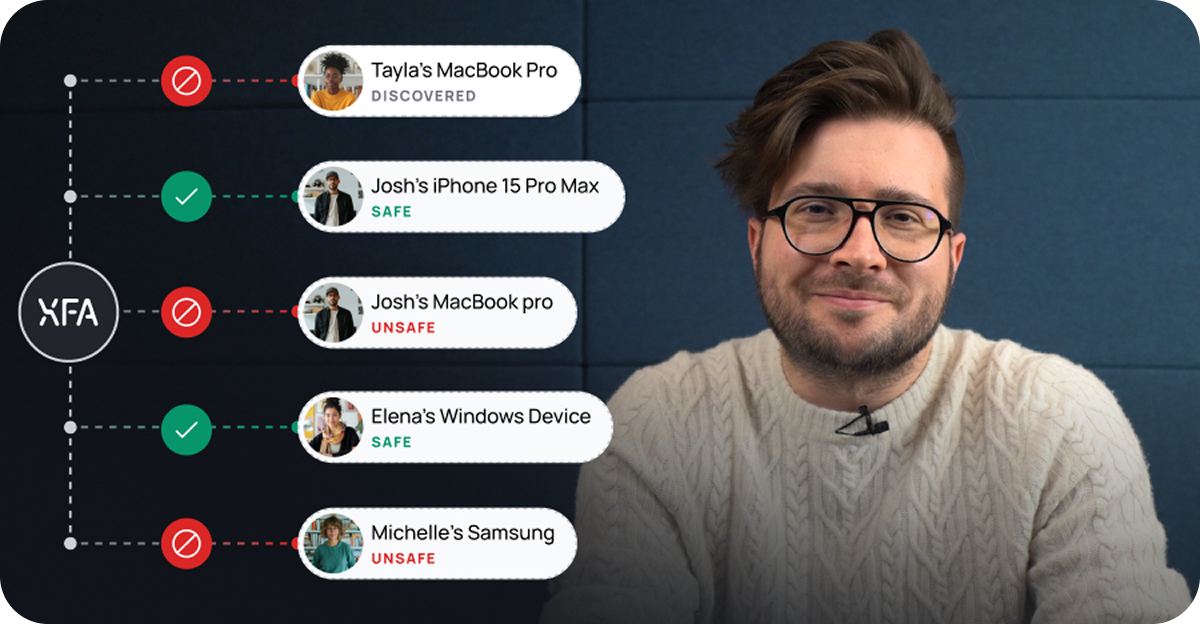XFA compared to Okta
See why businesses choose XFA for smarter security insights, fewer login disruptions, and flexible integration without unnecessary complexity.
What is XFA?
XFA is the device security solution that seamlessly identifies every device used by people in your organization, informs users about risks, and verifies compliance with the security policy for each device during login — all without needing direct control or management of the devices.
What is Okta (Device Assurance)?
Okta is an identity and access management solution that helps companies manage and secure access into applications for their employees and users, mainly to allow one login to give access to many applications. The platform has a feature named 'Device Assurance' that is used to enforce device security across an organization, which will be compared with XFA below.
Why choose XFA over Okta?
XFA includes more security checks
Both solutions can verify whether a device has an up-to-date OS, is encrypted, and requires a password to unlock the screen. However, XFA goes further with advanced security checks, including verifying if the browser itself is up-to-date, detecting when the device was last rebooted, ensuring an active antimalware solution, and identifying jailbroken or rooted devices—plus more enhancements on the way.
Note: While Okta allows policies for some of these checks, the data must come from a third-party device management solution, which requires manual deployment and integration, and surely increases the total cost of the solution.
XFA focuses on the best user experience by preventing end-users from being blocked when logging in.
Both Okta and XFA can block access if a device fails to meet minimum security standards. However, XFA goes further by proactively notifying users in advance about potential issues or required actions, helping them resolve problems before they are unexpectedly blocked at login.
- • XFA includes early discovery of every unique device using Microsoft, Google Workspace, or Okta SSO—without requiring user installation—giving administrators insight into the impact of their policy changes.
- • XFA provides early email warnings about identified risks or required actions, helping users avoid being blocked at login.
XFA provides extensive insights to admins
The XFA dashboard provides detailed visibility and statistics on all devices, including Common Vulnerabilities and Exposures (CVEs) based on OS and browser versions. This enables a more granular, risk-based approach to device security. In contrast, Okta's dashboard focuses primarily on identity and access management risks, offering limited insights into specific device vulnerabilities.
XFA can work with any application and identity provider (not only Okta SSO)
Okta Device Assurance is natively integrated within the Okta ecosystem, creating a dependency on Okta as the identity provider. In contrast, XFA offers seamless integration with any identity provider and any application, making it a more flexible and future-proof solution. Additionally, XFA's direct integration with Okta Identity Provider positions it as a powerful alternative to Okta's Device Assurance feature.
Want to know how XFA fits in your business?
Let's talk.



